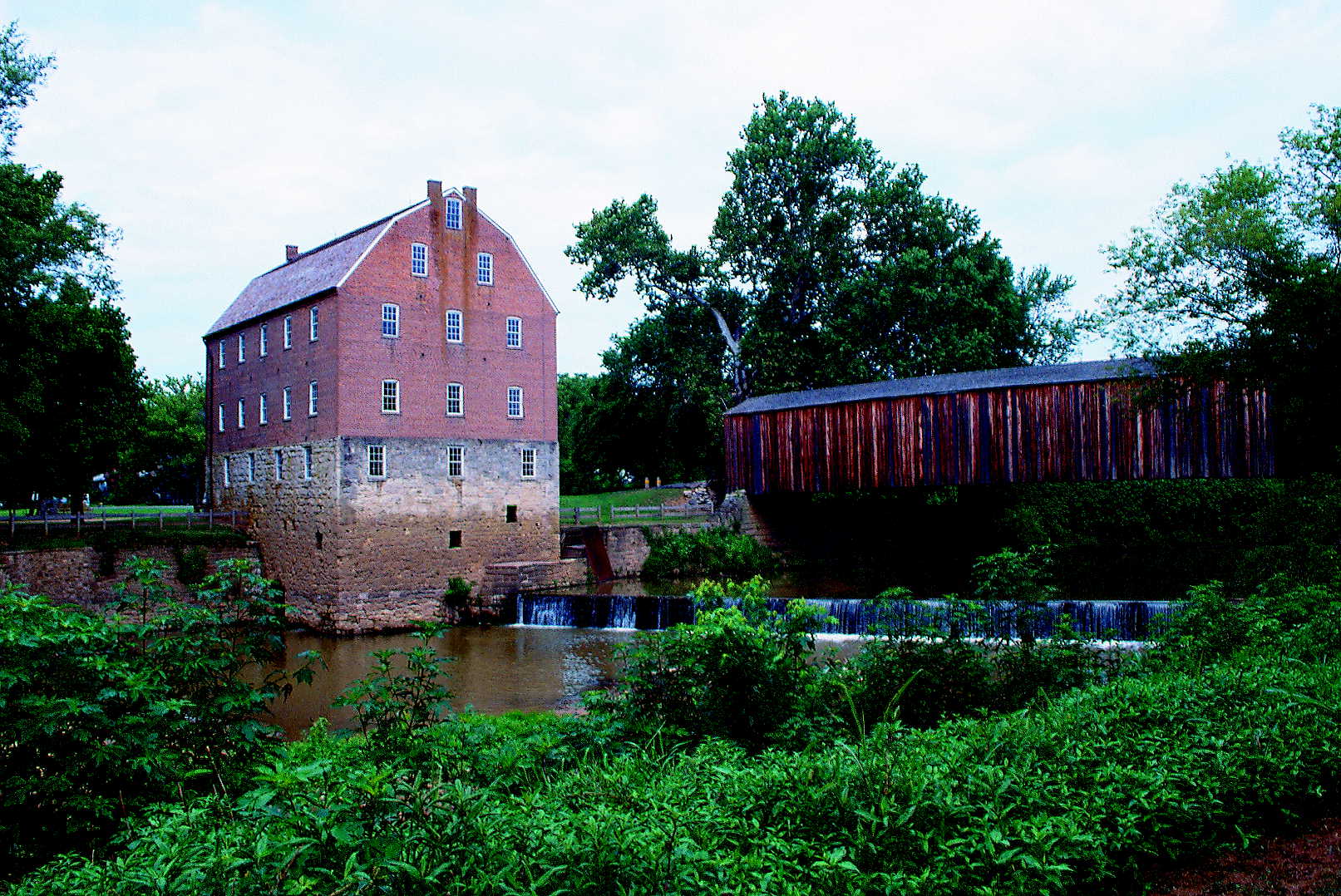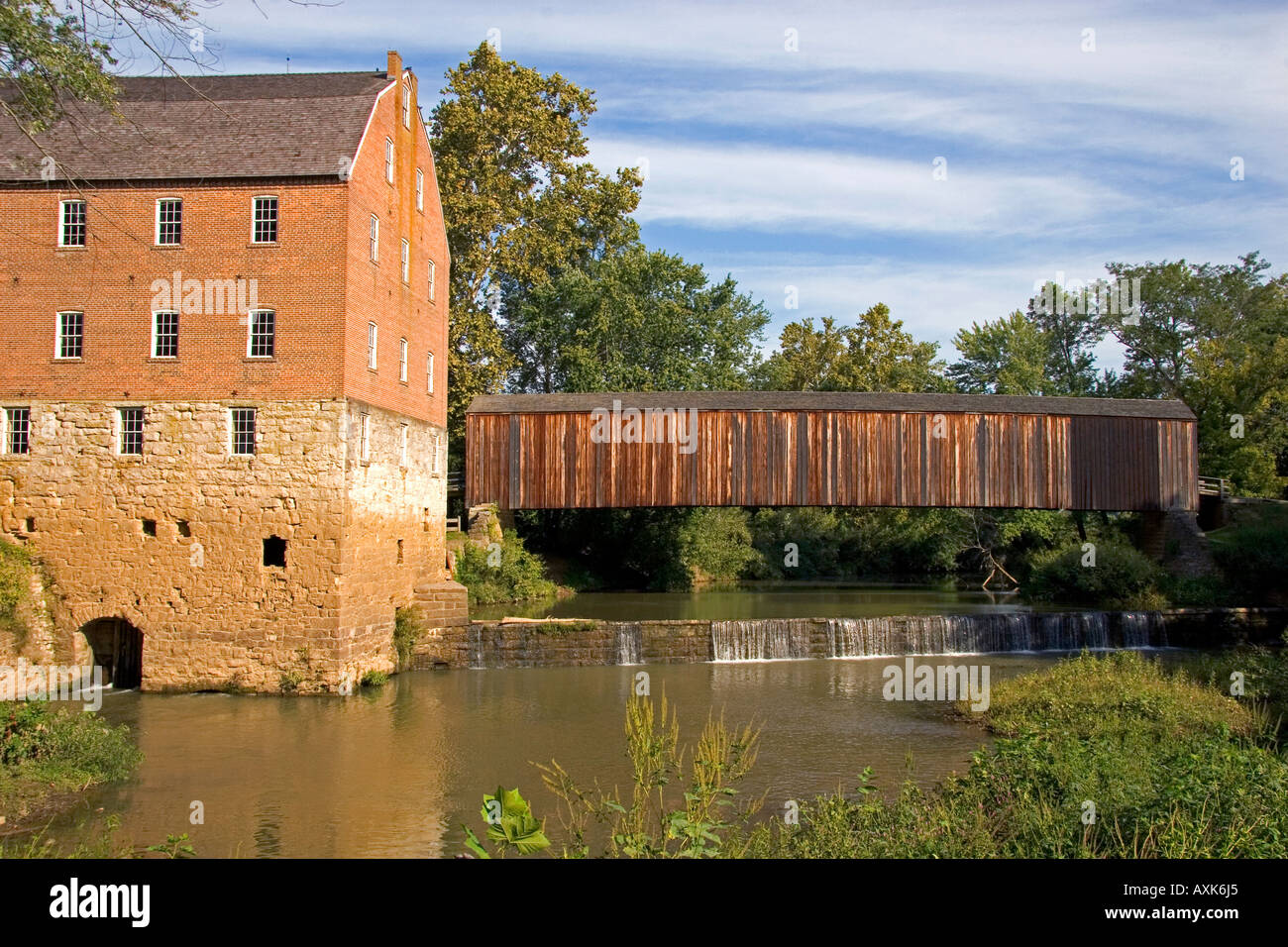
Burfordville, Missouri: Where Time Finds its Own Pace Beneath the Covered Bridge
The air in Burfordville, Missouri, carries a different kind of quiet. It’s not the stark silence of an abandoned place, but a deep, resonant hush, punctuated by the gentle murmur of the Whitewater River and the occasional creak of ancient timbers. Here, in the heart of Cape Girardeau County, just a stone’s throw from the bustling arteries of modern life, time doesn’t merely slow down; it seems to settle into a rhythm dictated by the turning of a waterwheel and the whispers of a century-and-a-half-old covered bridge.
Burfordville isn’t a city; it’s barely even a village. It’s a historical tableau, a living museum meticulously preserved, offering a poignant glimpse into America’s agrarian past. Its fame, and indeed its very identity, rests upon two remarkable structures: the Bollinger Mill and the Burfordville Covered Bridge, both designated as the Bollinger Mill State Historic Site. These twin sentinels stand as enduring testaments to the ingenuity, resilience, and quiet determination of the early settlers who carved a life out of the rugged Missouri frontier.
Stepping into Burfordville is like walking onto a film set for a historical drama, yet it is utterly authentic. The star of the show, without question, is the Burfordville Covered Bridge. Stretching 140 feet across the Whitewater River, its vibrant red siding and classic Howe Truss design are instantly captivating. Built in 1868, it is one of only four covered bridges remaining in Missouri, a dwindling fraternity that evokes a powerful sense of nostalgia for a simpler, more arduous era of travel.

"There’s something almost magical about driving through it," muses Sarah Miller, a local history enthusiast who often brings her grandchildren to the site. "The way the light filters through the cracks in the wood, the echoing sound of your tires on the planks – it’s a direct connection to the past. You can almost hear the hooves of horses and the rumble of wagon wheels."
Indeed, the bridge was a vital artery for the nascent community. Before its construction, crossing the Whitewater River, especially during high water, was a perilous undertaking. The bridge, designed by the Cape Girardeau & Jackson Plank Road Company, not only facilitated safer passage but also protected the wooden bridge timbers from the elements, extending its lifespan significantly in an age before advanced preservation techniques. Its sturdy oak and pine timbers, joined with remarkable precision, stand as a testament to the skilled craftsmanship of its builders, many of whom were local German immigrants who brought their building traditions with them to the New World.
Adjacent to the bridge, equally commanding attention, is the impressive Bollinger Mill. Its towering, four-story limestone structure, built directly on the riverbank, speaks volumes about its historical importance. The mill’s story predates the bridge, tracing its roots back to George Frederick Bollinger, a Swiss-German immigrant who arrived in the area in 1797. He built the first log mill on this site around 1800, recognizing the power of the Whitewater River to drive his grinding stones.
The current stone structure, though, is the third iteration of the mill, completed in 1867 – a year before the covered bridge. Its substantial size and advanced machinery, including four sets of grinding stones, allowed it to process vast quantities of grain for farmers across a wide region. Wheat, corn, and oats were transformed into flour and meal, essential commodities for the growing population. The mill wasn’t just a place of commerce; it was a social hub, where farmers would gather, exchange news, and conduct business, effectively serving as the economic engine of the community.
"The mill was the heart of Burfordville," explains Mark Johnson, a park ranger at Bollinger Mill State Historic Site. "Farmers would travel for miles, often camping overnight, just to get their grain ground. It wasn’t just about food; it was about community, about survival, about building a life in a new land. And the fact that it still has its original machinery, and we can actually operate it for demonstrations, gives visitors an incredible sense of what that was like."
The mill’s machinery is a marvel of industrial engineering for its time. A complex system of belts, gears, and chutes, powered by a massive turbine fed by the river, still stands ready to grind grain. On special occasions, the mill comes to life, its internal mechanisms whirring and clanking, transforming raw grain into fine flour, a sensory experience that transports visitors directly into the past. The scent of fresh flour, the rumble of the machinery, and the sight of the water cascading over the milldam create an unforgettable atmosphere.
Yet, despite the enduring presence of its bridge and mill, Burfordville itself never truly blossomed into a bustling town. Like many small, isolated settlements, its fate was sealed by the relentless march of progress. The arrival of railroads in nearby towns, bypassing Burfordville, gradually siphoned away its economic vitality. Farmers could transport their goods more efficiently elsewhere, and the need for a local grist mill diminished with the rise of larger, more centralized processing plants.
The population dwindled, businesses closed, and what was once a vibrant, if modest, community slowly receded into memory. Today, Burfordville is more of a historical landmark than a populated place. A handful of homes dot the landscape, but the echoes of a once-thriving village are more profound than its current inhabitants. It’s a testament to the ephemeral nature of human settlements, a reminder that even the most vital hubs can be rendered obsolete by technological advancement and shifting demographics.

However, the very decline of Burfordville is what ultimately preserved its treasures. Had it grown into a modern town, the bridge might have been replaced by a concrete structure, the mill demolished for new development. Instead, the quiet abandonment allowed these structures to stand, largely untouched, until their historical significance was recognized.
The preservation efforts that saved the Bollinger Mill and Burfordville Covered Bridge are a testament to the foresight and dedication of individuals and organizations. In the mid-20th century, as many of Missouri’s remaining covered bridges were lost to neglect or modernization, a concerted effort by locals and the state park system ensured Burfordville’s bridge and mill would survive. The mill was donated to the state in 1967, and extensive restoration work has ensured its structural integrity and operational capacity. The bridge underwent significant repairs in the late 1990s, cementing its future for generations to come.
Today, visitors to Burfordville find more than just old buildings; they discover a profound sense of peace and a connection to a bygone era. The site offers picnic areas, interpretive signs detailing the history of the mill and bridge, and walking trails along the Whitewater River. It’s a place for quiet reflection, for photographers seeking iconic imagery, and for families wanting to offer their children a tangible link to history that goes beyond the pages of a textbook.
"It’s an escape," says Emily Chen, a tourist from St. Louis, as she captures the bridge with her camera. "You drive out here, and the noise of the city just melts away. You can almost feel the weight of history in the air, but it’s not heavy; it’s comforting. It reminds you that some things are worth preserving, that not everything needs to be new and fast."
Burfordville stands as a powerful symbol of Missouri’s rural heritage. It represents the spirit of self-sufficiency and community that defined early American life. It reminds us of a time when the pace of life was dictated by the seasons, by the strength of a river, and by the ingenuity of human hands. It’s a place where the past isn’t just remembered; it’s tangible, breathable, and deeply resonant.
In a world that constantly races forward, Burfordville offers a gentle invitation to pause. To listen to the water, to feel the aged wood beneath your feet, and to imagine the lives lived within these historic confines. It’s a quiet sentinel, guarding the echoes of a different time, ensuring that the stories of George Frederick Bollinger, the anonymous bridge builders, and the farmers who relied on their creations continue to inspire and inform those who seek a deeper understanding of America’s enduring spirit. Burfordville, Missouri, may be small, but its story is as vast and timeless as the river that flows beneath its iconic covered bridge.


